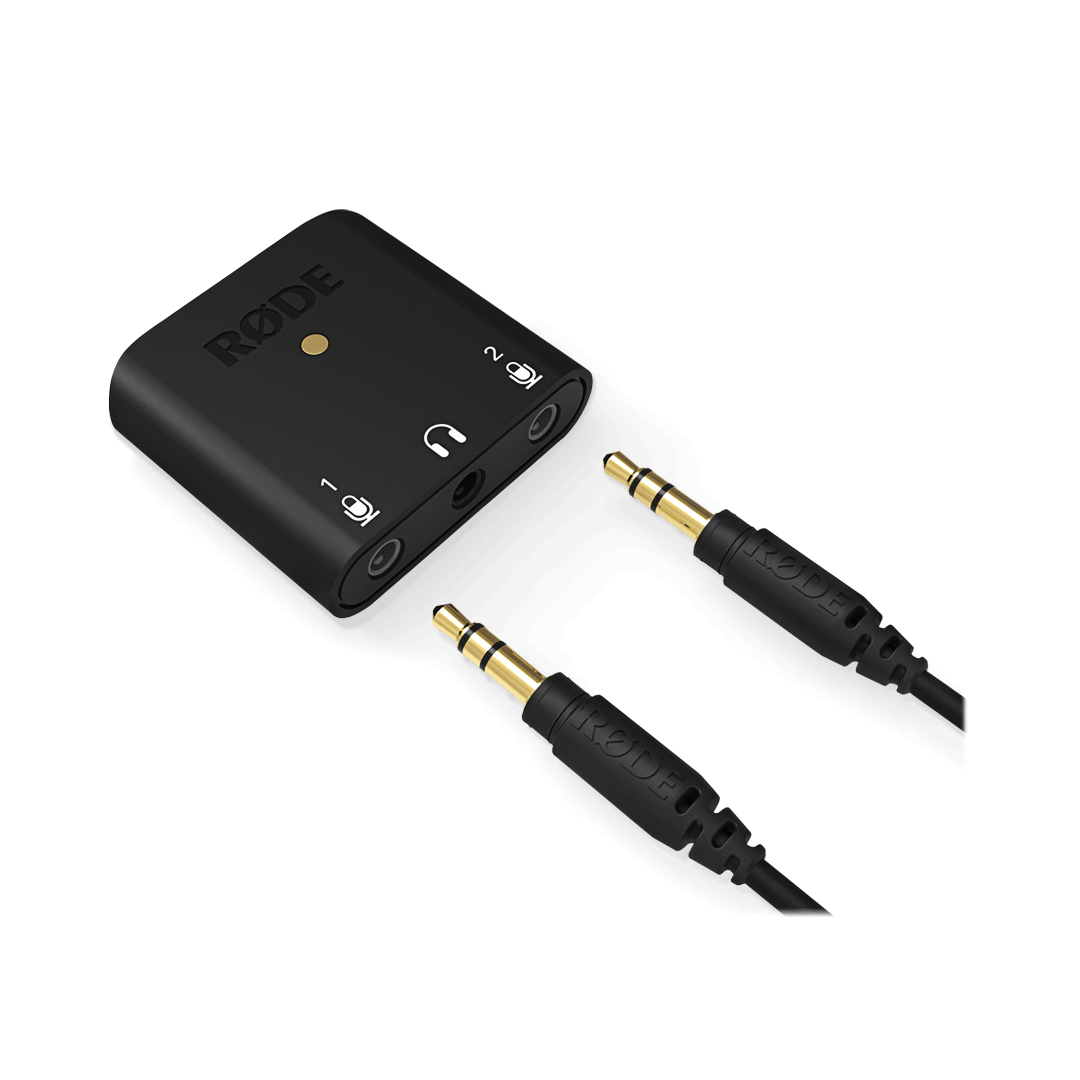AI-Micro
Compact Audio Interface
The AI-Micro is an ultra-compact dual-channel interface for recording high-quality audio to a mobile device or computer. Featuring two auto-sensing inputs for connecting virtually any microphone with a 3.5mm output, headphone monitoring, a universal USB output for use with smartphones, tablets and computers, and compatibility with RØDE apps for supercharged sound, the AI-Micro allows you to record without limits.
- Ultra-compact dual-channel audio interface for computers and mobile devices
- Compatible with virtually any microphone with a 3.5mm output, including RØDE VideoMics, lavaliers, wireless systems and stereo microphones that do not require plug-in power
- Auto-sensing inputs for connecting TRS or TRRS microphones
- High-quality headphone output for zero-latency audio monitoring and playback
- Connects seamlessly to computers, smartphones and tablets via the universal USB output (USB-A, USB-C and Lightning cables supplied)
- Compatible with the RØDE app suite for expanded features and functionality, on-the-go configuration and broadcast-quality recording on any device
Incredible Audio, Anywhere
The AI-Micro allows you to capture high-quality audio on your mobile or computer with ease. It features two 3.5mm inputs for connecting a wide range of microphones, including RØDE VideoMics, lavaliers, wireless systems like the Wireless GO. These are auto-sensing inputs that detect whether a TRS or TRRS microphone is connected and automatically adapt to accommodate – no adaptors needed. Input 1 can also be configured as a single stereo TRS input for use with stereo microphones that do not require plug-in power.
High-quality microphone preamps and high-resolution (24-bit/48kHz) recording ensure crystal-clear audio capture on any device, with a headphone output for echo-free audio monitoring and playback. Whether you're interviewing, podcasting, presenting, or livestreaming, record incredible audio anywhere with the AI-Micro.

Universal Compatibility With All Your Devices
The AI-Micro can connect seamlessly to all your devices via its universal USB output. It is supplied with USB-A, USB-C and Lightning cables, so you can get recording instantly, and is plug-and-play compatible with Mac, Windows, iOS and Android devices. Portable recording has never been easier.
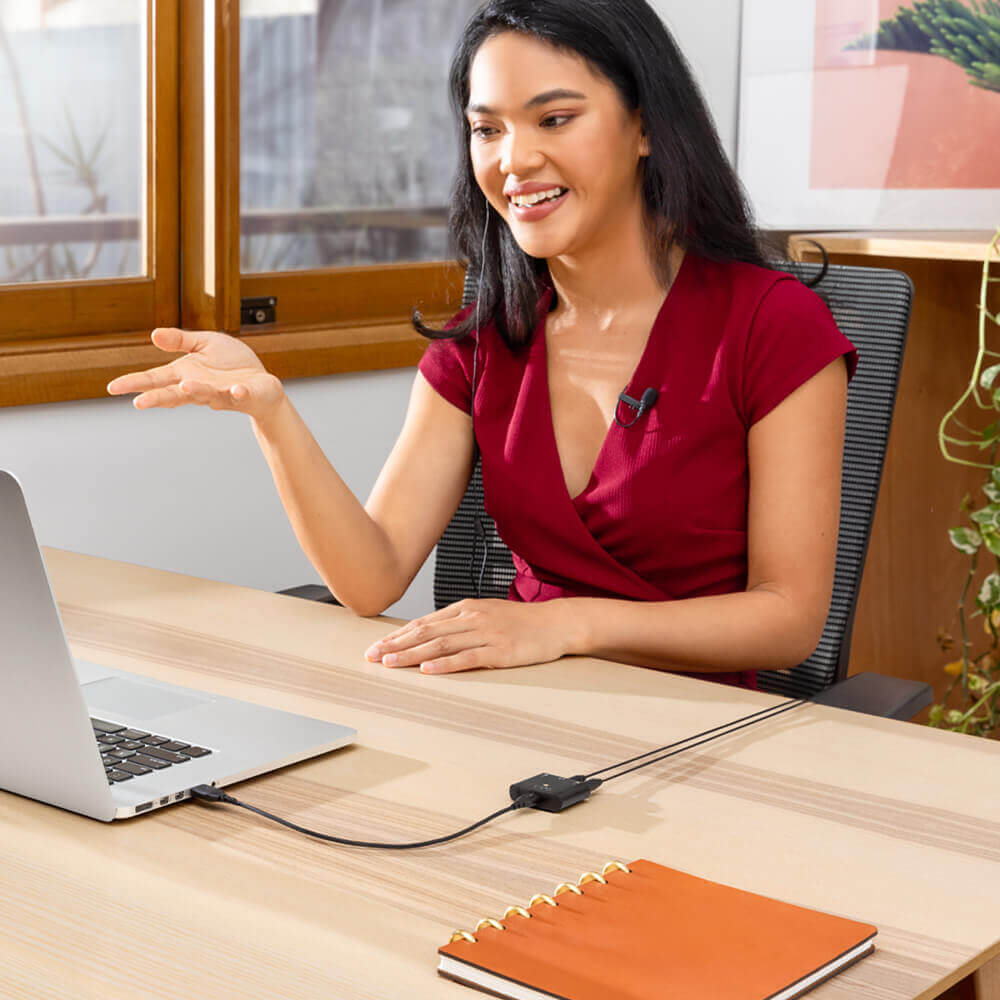
Pocket-sized Portability
Weighing less than 20 grams, the AI-Micro is extremely compact and lightweight. Just add two lavalier microphones and you have a complete, studio-quality recording setup that fits in your pocket. Perfect for interviewing in the field, on-the-go podcasting, and making video calls or livestreaming at home.
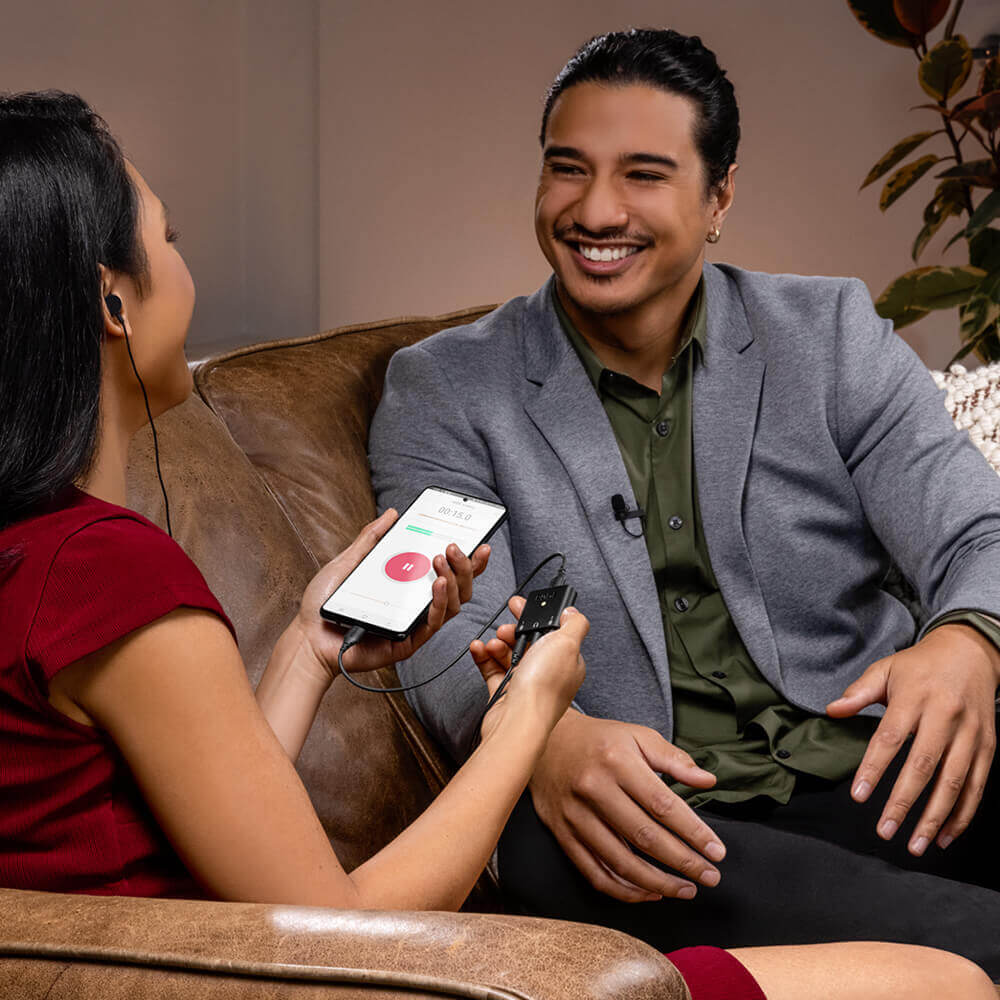
AI-Micro User Guide
The AI-Micro User Guide explains everything you need to know about using your AI-Micro. This comprehensive guide covers everything from getting started through to updating device firmware and how to access expanded features and functionality with the RØDE app suite, including RØDE Connect, RØDE Reporter and RØDE Central.
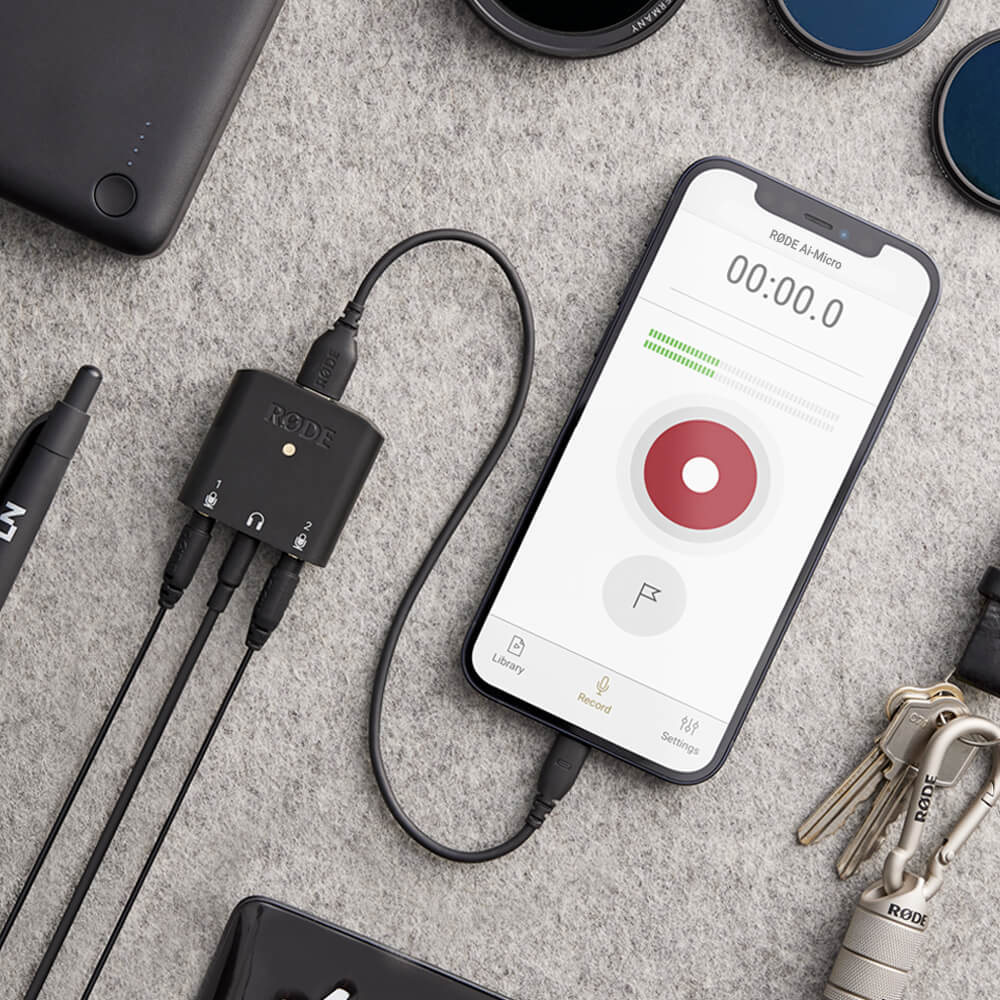
Supercharge Your Microphone
The AI-Micro is compatible with the entire RØDE app suite, giving you access to expanded features
and functionality, on-the-go configuration, broadcast-quality recording on any device.

RØDE Connect
Record pro-quality podcasts or livestreams on a computer with your 3.5mm microphone. Record with up to four microphones on a computer. Access studio-quality audio processing at the click of a button, and much more.
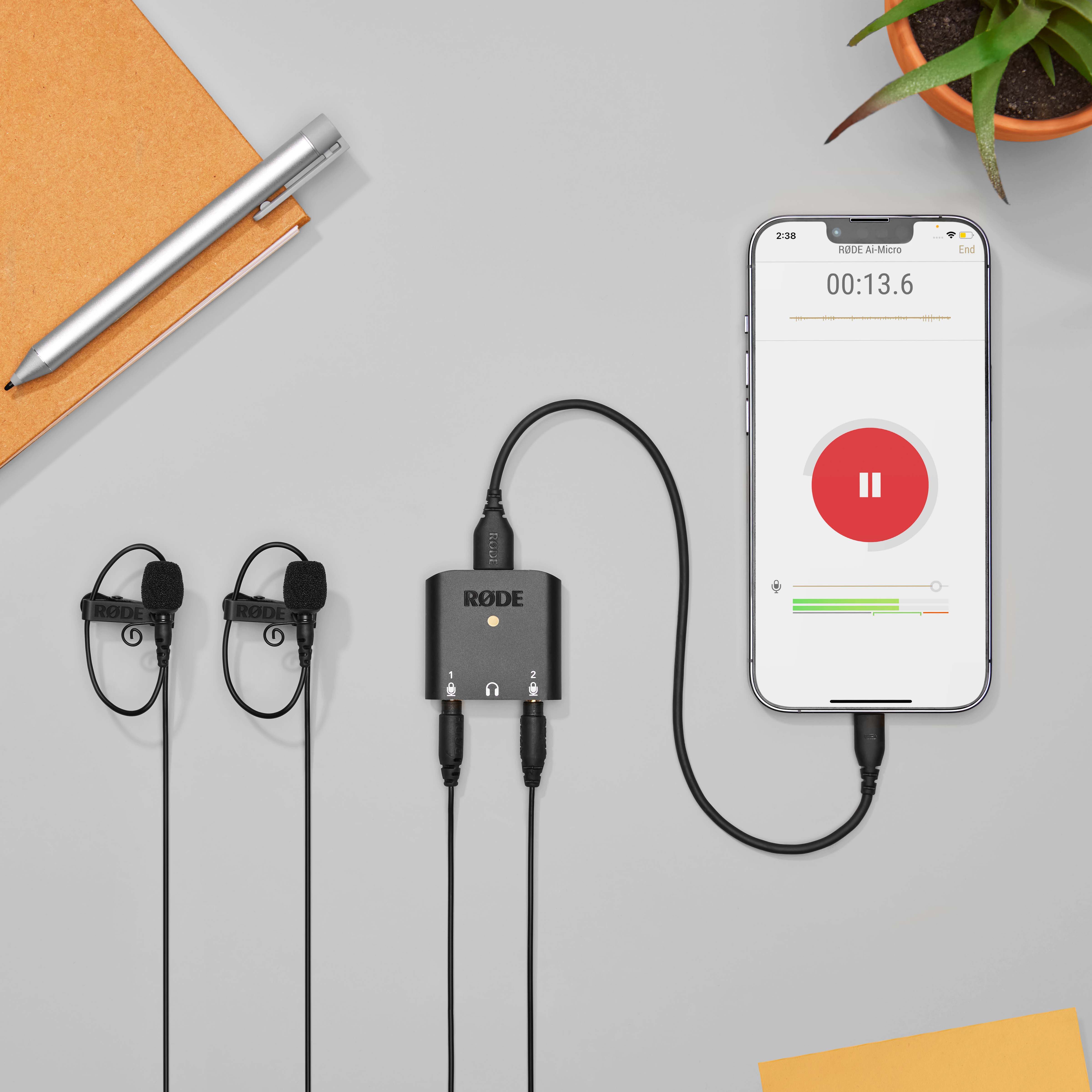
RØDE Reporter
Record broadcast-quality audio anywhere using your smartphone or tablet, with complete control over the AI-Micro’s settings, a realtime waveform display and level meter, native sharing and more.
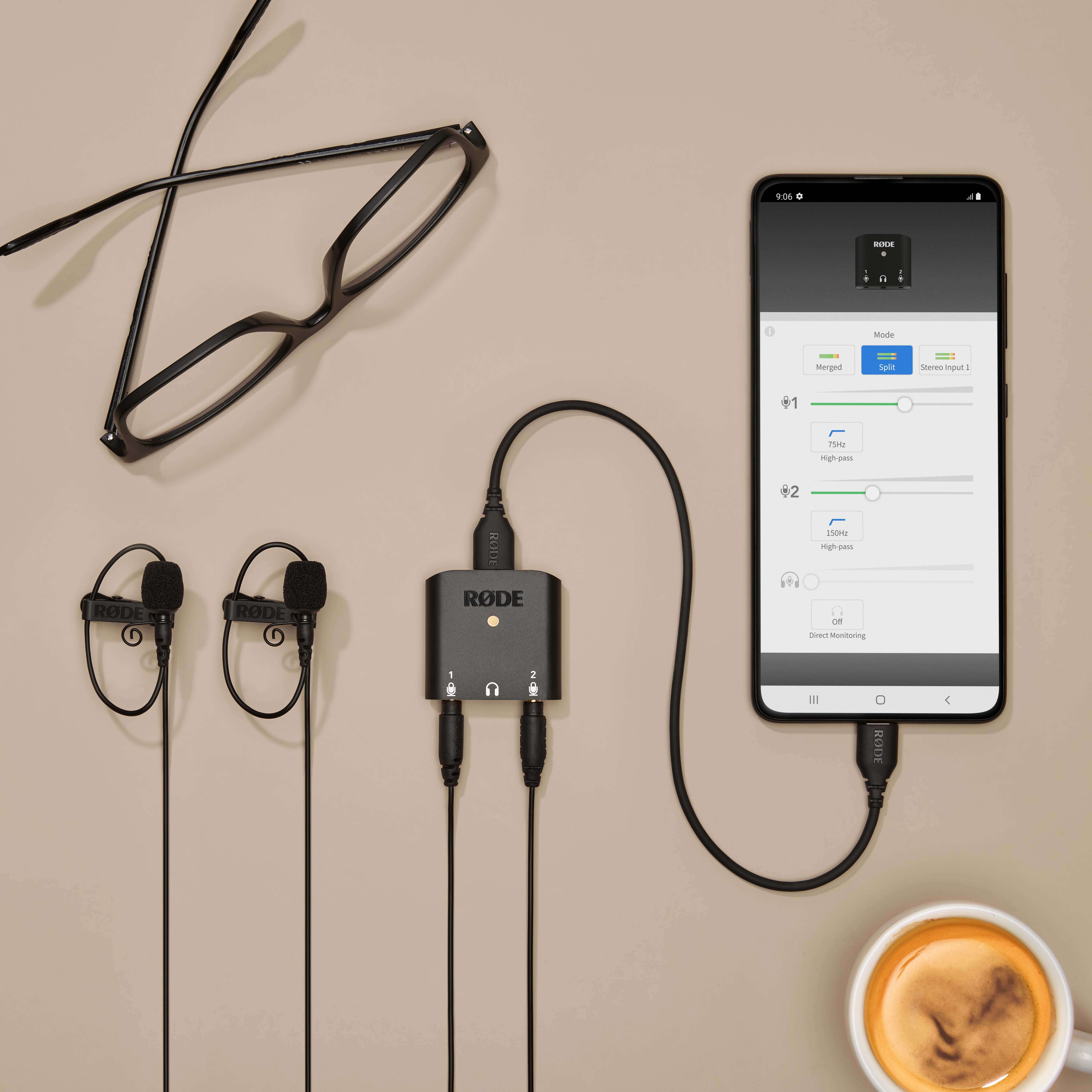
RØDE Central
Configure your AI-Micro with your mobile device or computer, including setting the microphone input gain and headphone monitor level, engaging a high-pass filter, and more.
Specifications
FAQs
The AI-Micro can be used with iOS and Android smartphones and tablets, and Mac and Windows computers, as long as the device has a USB-A, USB-C or Lightning connector. OS requirements: macOS Big Sur and higher, Windows 10 (Build 19041) and higher, iOS 14 and higher, Android 9.0 and higher.
You can plug virtually any microphone that has a 3.5mm output into the AI-Micro. This includes RØDE VideoMics, lavaliers, wireless systems like the Wireless GO, and stereo microphones that do not require plug-in power. The AI-Micro's microphone inputs are TRS/TRRS auto-sensing, meaning they automatically detect whether a TRS or TRRS microphone is connected and adapt to accommodate either connection type.
While similar in design and concept to the SC6-L, the AI-Micro has a few key updates that make it far more versatile, including a universal USB output for use with Android smartphones and tablets (and iOS devices with a Lightning port like the SC6-L), as well as computers. It has also enhanced inputs for use with a wider range of microphones and is compatible with the RØDE app suite for accessing advanced features, on-the-go configuration, and broadcast-quality recording on any device.
Yes. To connect the AI-Micro to an iOS device with a Lightning port, you need a Lightning Accessory Cable – either the included SC21 cable, or the RØDE SC15 or SC19.
We recommend using the included cables to connect the AI-Micro to your device. If you require a longer cable, there is a selection of different cable types available from the RØDE accessory range. To connect the AI-Micro to an iOS device with a Lightning port, you need either the included SC21 cable, or the RØDE SC15 or SC19.
Check out the AI-Micro User Guide for detailed information on its functions and features.
The input gain for each of the AI-Micro's microphone channels can be adjusted in RØDE Connect, RØDE Central and RØDE Reporter. You can also adjust the input gain using the level control in third-party audio or video apps if they have this feature. If you are using an app without a level control and would like to adjust the input gain, use RØDE Central, as any changes made to the levels in RØDE Connect or RØDE Reporter will not be retained when using another app.
The AI-Micro allows you to configure how the audio from the input channels is routed to the output. There are three different channel modes, ‘Merged’, ‘Split’ and ‘Stereo’, which are suited to different microphone setups.
In ‘Merged’ mode, the input signal is routed to both the left and right channels of the output, which is ideal if you are just using one microphone. In ‘Split’ mode, input 1 is routed to the left channel of the output and input 2 is routed to the right channel, which is ideal if you are using two microphones. ‘Stereo’ mode is ideal when you are using a stereo microphone; the left and right channels of input 1 are routed to the respective channels of the output to ensure you retain the microphone’s stereo image (input 2 is disabled).
You may have direct monitoring deactivated. This can be turned on/off via a computer or mobile device using RØDE Central (note: direct monitoring is activated by default on the AI-Micro).
It is possible to connect a dynamic XLR microphone (or other microphone that does not require phantom power) to the AI-Micro with an appropriate XLR to 3.5mm adaptor. However, we strongly recommend using the RØDE AI-1 interface for connecting XLR microphones to a computer.
To connect a stereo microphone such as the Stereo VideoMic Pro to the AI-Micro, you must plug it into input 1 and use either RODE Central or RODE Reporter apps to set the channel mode to ‘Stereo’. This configures input 1 to be a standard stereo TRS input (and disables input 2).
Note: This function only works for stereo microphones that do not require plug-in power.



